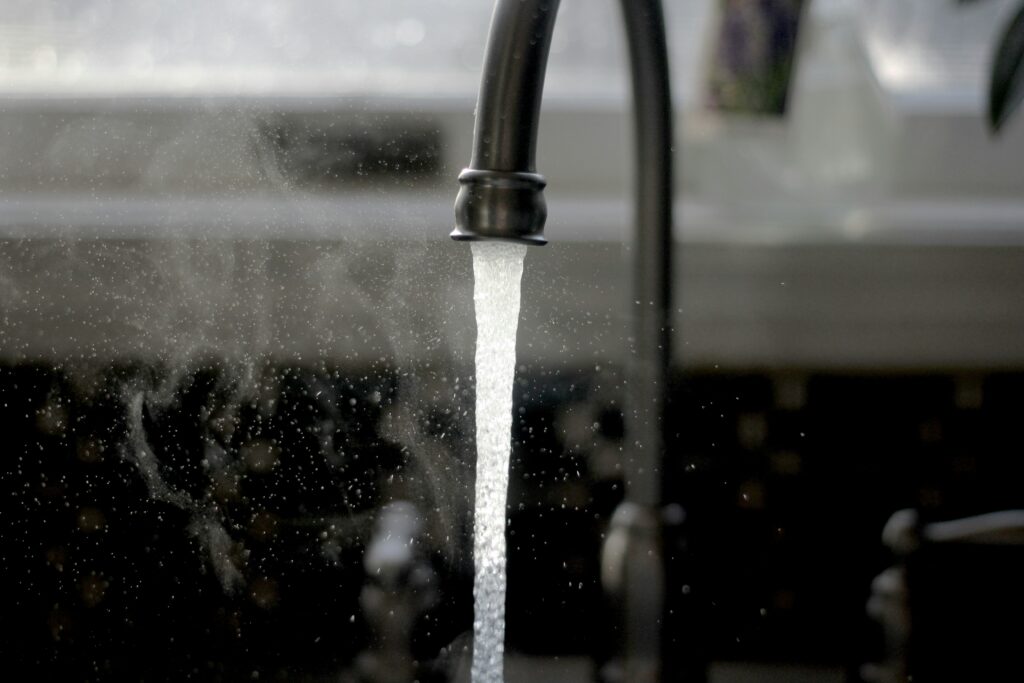
by Ellie Gabel
Water is something that humans can’t live without. Therefore, it’s critical to follow safety measures and learn how to spot unsafe water to survive natural disasters and human-caused accidents. It’s also vital to drink enough daily to avoid potential health problems, but if it’s contaminated, it can do more harm than good.
Unhealthy water can be found outdoors, in the depths of wooded areas or even in the average person’s household. You can learn how to spot it to prevent illness.
Common Sources of Unsafe Water
On the surface, choosing natural options for drinking water, such as streams, rivers and rainwater, may seem like the safest choice. However, these sources also carry many risks for contamination. Slow-moving currents can lead to stagnant waters because of a buildup of particles and nutrients. The EPA’s 2019 Wadeable Stream Assessment found that only 28% of U.S. rivers and streams had healthy biological communities. It is best to avoid slow-moving water sources for swimming or drinking, as they could increase the risk of illness or disease.
However, water pollution is not limited to the outdoors. Everyday households may also face issues of water contamination. Homes either have hard or soft water. Hard water contains high levels of minerals, and about 85% of U.S. households contend with this.
Visual and Sensory Indicators of Unsafe Water
Remaining alert by relying on senses and visual cues when unsure about water quality is crucial. The World Health Organization says 24% of global deaths can be attributed to environmental risks, so it is essential to keep a watchful eye out at all times. Here are a few visual and sensory clues to consider:
- Foul odors or taste: Smells or tastes of sulfur or spoiled food are clear indicators that hydrogen sulfide is present, meaning potential bacterial contamination. Water that tastes salty should be avoided.
- Abnormal coloring: Cloudy or discolored water may indicate high turbidity. While this can be found in water supplies, it should not exceed 0.5 nephelometric units at any given time. If it does, it can be treated by qualified professionals.
- Growth or algae: Carefully inspect the water source for unusual growths on the surface. Stagnant water can develop algae, strange smells, unusual colors, foam, or even dead animals or fish.
Diseases and Illnesses From Contaminated Water
There are many dangers associated with drinking or swimming in polluted water that can lead to short-term illnesses. Here are a few things that can be transmitted through contaminated water:
- Hepatitis: This disease can be spread through drinking water contaminated with fecal matter. Two types of hepatitis can be directly transmitted through water: A and E. Symptoms include yellowing skin, abdominal pain and drowsiness.
- Rotavirus: This virus was commonly found in infants and children until the release of the rotavirus vaccine in 2006. Rotavirus can be transmitted through contaminated water and cause symptoms of intense discomfort like vomiting, stomach pain and diarrhea.
- Adenovirus: This infection can cause minor or severe symptoms, such as the common cold, pneumonia or bronchitis. While it is mostly airborne, it can also be transmitted through polluted water, such as swimming pools and natural sources.
Simple Field Tests and Tools for Water Assessment
Solutions are available to treat contaminated water supplies and prevent the spread of waterborne diseases. Public water systems must provide a quality assessment to customers yearly.
People who use well water must conduct yearly tests for bacteria. They should use state-certified lab kits to assess the water correctly. It is essential to test the supply after repairs have been made to the system, if someone is pregnant, or if there is visually discolored water or bad taste.
Practical Tips for Preppers: Building a Water Safety Checklist
While there are many reasons a water supply can become infected by bacteria, there are preventive measures to stay on top of this critical matter. Here’s how to develop a water safety checklist:
- Conduct risk assessments: Be aware of natural disasters that may affect nearby water sources. These occurrences can vary but mainly refer to floods, wildfires or some other form of contamination.
- Contact emergency responders: Prepare for potential water dangers by joining local committees that can coordinate steps to take immediate action during disasters.
- Build detection systems: Natural disasters are not avoidable. Take time to prepare by setting up notification and monitoring systems.
Staying Vigilant and Informed
Water pollution can occur from natural disasters or slow-moving water streams, and it is important to be alert and take the proper actions to stop disease or illness from spreading. Staying proactive is the safest way for households to stay safe from the dangers of polluted water and the serious consequences it can bring.
Read about proper water storage to hold you over in an emergency.
Fight censorship. Share this article.
=====
Become a Survival Dispatch Guardian …
We bring together survival enthusiasts and preppers to share skills and knowledge, so you can enhance your preparedness for emergencies and ensure the safety of you and your community.
The Results You’ll Get …
Our community, courses, and memberships are pretty special. We focus on the ways it will make a huge difference in your life.
Here are a few of the things you’ll be able to do as a Survival Dispatch Guardian …
1) Improve your emergency preparedness by learning survival skills and strategies from experienced preppers.
2) Build lasting connections with like-minded individuals that share your passion for safety and readiness.
3) Access a wealth of knowledge and resources to assist in protecting you and your community during unexpected situations.
Click HERE to get started.
=====
